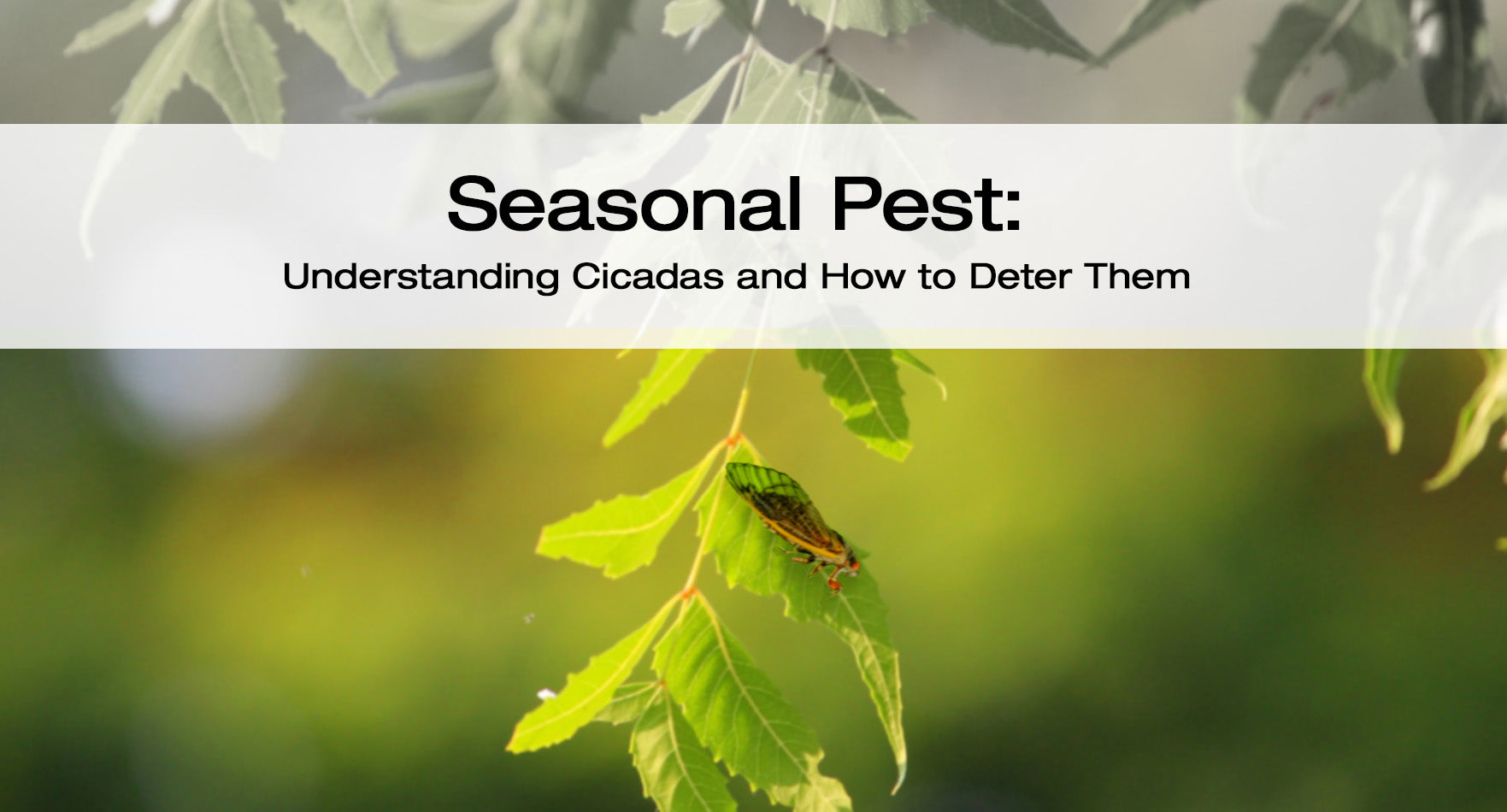As the weather warms and nature springs to life, so too do some of its most fascinating inhabitants: cicadas. These buzzing insects are a quintessential part of the summer soundtrack in many parts of the world. However, for some, their arrival can also bring challenges. In this blog, we'll delve into the world of cicadas, exploring their lifecycle, behaviors, and most importantly, how to deter them from becoming a nuisance in your outdoor spaces.
The Cicada Lifecycle: Cicadas are insects belonging to the order Hemiptera and the superfamily Cicadoidea. There are over 3,000 species of cicadas worldwide, each with its own unique characteristics and habits. Most notable among these is their periodic emergence, which occurs in cycles ranging from annual to once every 17 years, depending on the species.
The lifecycle of a cicada begins underground, where they spend several years as nymphs feeding on the sap of tree roots. When the time is right, they emerge en masse, shedding their nymphal exoskeletons to reveal their adult forms. The males then begin their distinctive mating calls, using specialized structures called tymbals to produce their loud buzzing noises. After mating, the females lay their eggs in the branches of trees, and the cycle begins anew.
Understanding Cicada Behavior: While cicadas themselves are harmless to humans and typically do not cause significant damage to plants, their sheer numbers can be overwhelming. Additionally, their loud calls and discarded exoskeletons can create a nuisance, especially in residential areas. Understanding cicada behavior is key to effectively deterring them from your outdoor spaces.
Cicadas are attracted to the vibrations and warmth of sunlight, making trees and other elevated structures prime locations for mating and laying eggs. They are also drawn to artificial lights, which can inadvertently attract them to homes and outdoor living areas.
Deterrence Strategies: Fortunately, there are several effective strategies for deterring cicadas from your property and minimizing their impact on your outdoor enjoyment. Here are some tips to consider:
-
Physical Barriers: Erecting physical barriers such as fine mesh netting or cheesecloth around vulnerable plants can prevent female cicadas from laying their eggs in their branches.
-
Pruning and Maintenance: Regularly pruning trees and shrubs can help reduce potential nesting sites for cicadas. Removing dead or damaged branches can also improve overall plant health and vigor.
-
Use of a Fogger to Spray Repellents: Applying insect repellents or insecticides labeled for use against cicadas can deter them from congregating in your outdoor spaces. Be sure to follow all label instructions and safety precautions when using these products.
-
Attract Predators: Encouraging natural predators of cicadas, such as birds, bats, and predatory insects, can help keep their populations in check. Providing bird feeders, bat houses, and insect-friendly habitat can attract these beneficial creatures to your yard.
-
Reduce Outdoor Lighting: Minimizing outdoor lighting, especially at night, can help reduce the attraction of cicadas to your property. Consider using motion-activated or amber-colored lights, which are less attractive to insects.
Cicadas are a fascinating and ecologically important part of the natural world, but their presence can sometimes pose challenges for homeowners and outdoor enthusiasts. By understanding their lifecycle, behaviors, and effective deterrence strategies, you can minimize their impact on your outdoor spaces and enjoy the beauty of nature without interruption. So embrace the sights and sounds of summer, and let's keep those pesky cicadas at bay.










